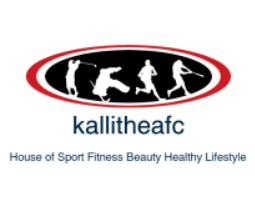What to Know About Tanning
People in the U.S. and several other places in the world love how tans look. To us, it helps bring out more definition in the muscles. We associate tanned skin with activity, leisure, and health.
What’s interesting is that tans are looked down upon in a lot of other places in the world. People associate tanned skin with lower-class people who have to work outside. It’s an interesting contrast, to be sure.
Either way, tanned skin and preference for tans are here to stay in America. If you’re looking for ways to stay tanner and get a tan before summer hits, there are things you can do to get your healthy glow without damaging your skin.
Here we discuss certain aspects of tanning that will give you a boost and shorten the time you have to spend sitting out in the sun. Let’s explore what you need to know about tanning!
Tanning While Avoiding Sun Damage
For anyone who wants to tan, be careful to avoid sun damage to your skin. Exposing your skin to direct sunlight for too long will certainly get you a nice tan. However, if you do it too much, you can burn your skin now and damage it down the road. People who spend too much time in the sun are also at higher risk of skin cancer. You can develop dark spots on your skin, and too much direct sunlight can cause wrinkles. We all know people who are tanned but look like they’ve been baking outside for hours. Hopefully, that’s not the look that you’re going for because your skin suffers.
Invest in High-Quality Tanning Products
One of the best things that you can do for your skin and get a lovely tan is to buy high-quality products that are skin-friendly. That way, you avoid damaging your skin whether you’re tanning outside or in a salon. Do some research online to find organic products free from as many chemicals as possible. Find an SPF sunscreen that will facilitate tanning but also manage appropriate UV exposure.
The same goes for paying for tanning services. Do your best to frequent reputable tanning businesses that use the best possible products. Avoid using tanning beds too often. Spray tans are a decent short-term option for people rather than spending hours at the beach or poolside to get a tan before a wedding or vacation.
How Peptides Facilitate Tanning
Melanotan 2 is a synthetic analog of the alpha-melanocyte-stimulating hormone. It was originally developed at the University of Arizona in the 1980s and has been the subject of interesting scientific research for years. One of the amazing benefits of Melanotan 2, or MT 2, is that in texts on rodents, those given the peptides experienced a darkening of the skin. The research opened the door to the development as a sunless tanning option.
If you’re new to peptides, you should know that they are naturally-occurring amino acid chains that elicit a reaction in the body. A lot of people often confuse peptides with SARMS, or selective androgen receptor modulators. If you’re curious about peptides vs. SARMS, one thing to remember is that, even though they often cross boundaries, they are not the same. SARMS bind to androgen receptors and peptides are a type of dietary supplement. Peptides trigger an increase in growth hormone and other hormones.
Avoid over-tanning to decrease your risk of skin damage or sunburn. Start earlier and slowly increase your exposure to the sun as your skin becomes accustomed to longer periods in a tanning bed or outdoors. Tanning has a lot to do with maintenance, so you have to stay at it if you want to stay looking tan all year long.



